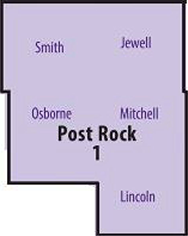 The month of September signals the prime time to fertilize your tall fescue or Kentucky bluegrass lawns. If you could only fertilize your cool-season grasses once per year, this would be the best time to do it.
The month of September signals the prime time to fertilize your tall fescue or Kentucky bluegrass lawns. If you could only fertilize your cool-season grasses once per year, this would be the best time to do it.
These grasses are entering their fall growth cycle as days shorten and temperatures moderate (especially at night). Cool-season grasses naturally thicken up in the fall by tillering (forming new shoots at the base of existing plants) and, for bluegrass, spreading by underground stems called rhizomes. Consequently, September is the most important time to fertilize these grasses.
Apply 1 to 1.5 pounds of actual nitrogen per 1,000 square feet. The settings recommended on lawn fertilizer bags usually result in about 1 pound of nitrogen per 1,000 square feet. We recommend a quick-release source of nitrogen at this time. Most fertilizers sold in garden centers and department stores contain either quick-release nitrogen or a mixture of quick- and slow-release. Usually only lawn fertilizers recommended for summer use contain slow-release nitrogen. Any of the others should be quick-release.
The second most important fertilization of cool-season grasses also occurs during the fall. A November fertilizer application will help the grass green up earlier next spring and provide the nutrients needed until summer. It also should be quick-release applied at the rate of 1-pound actual nitrogen per 1,000 square feet.
By: Cassie Homan
